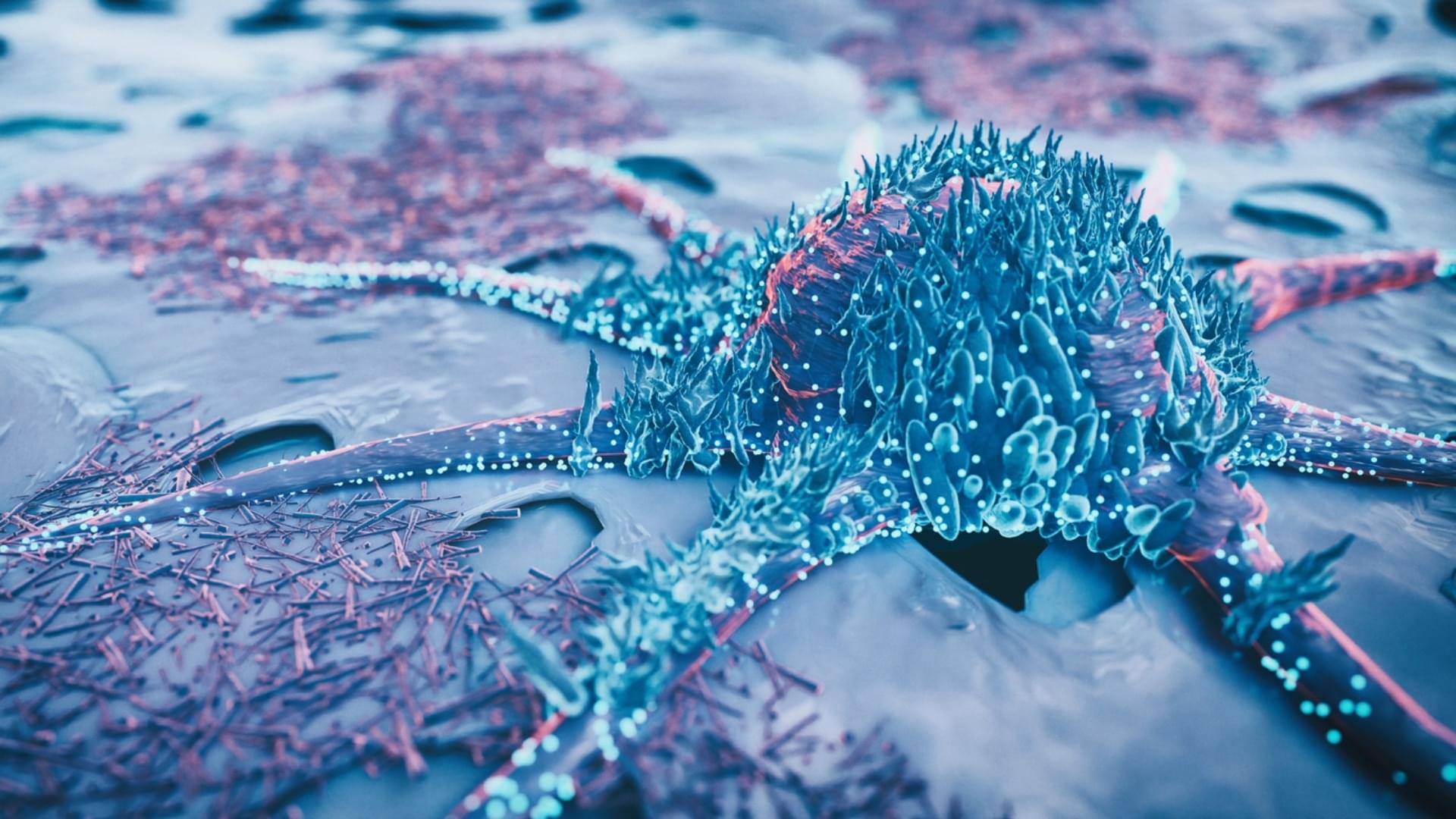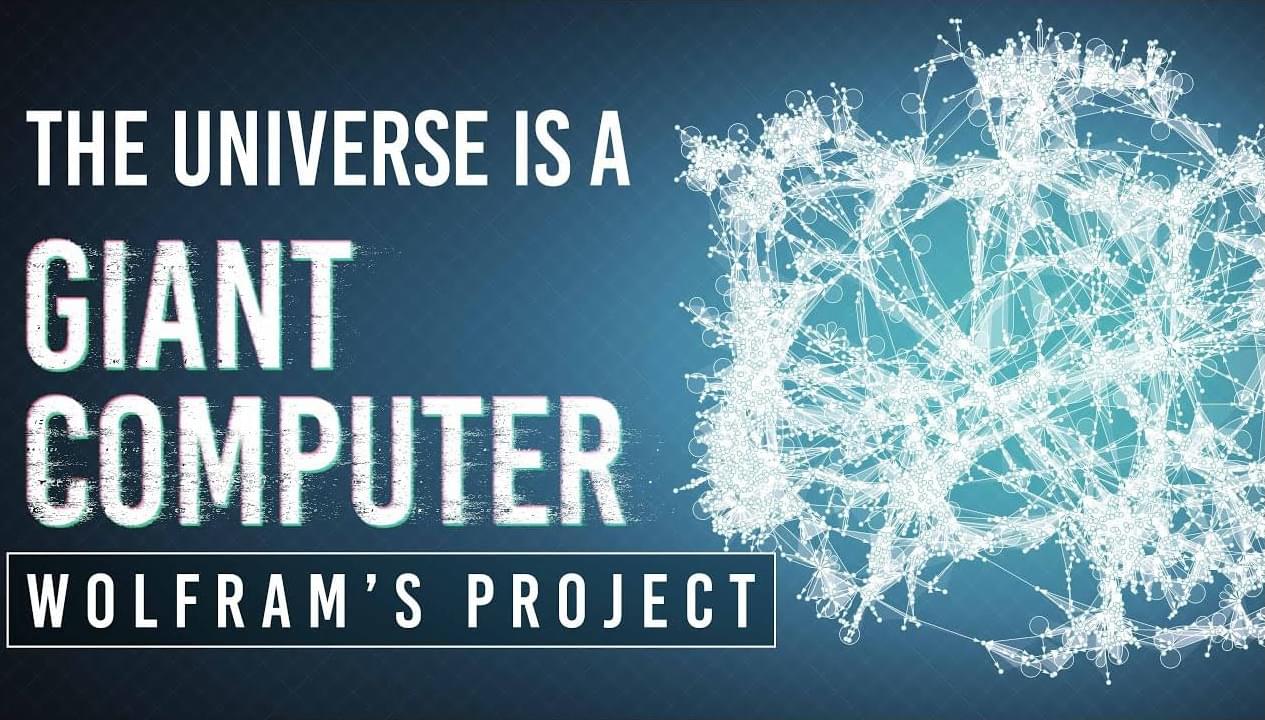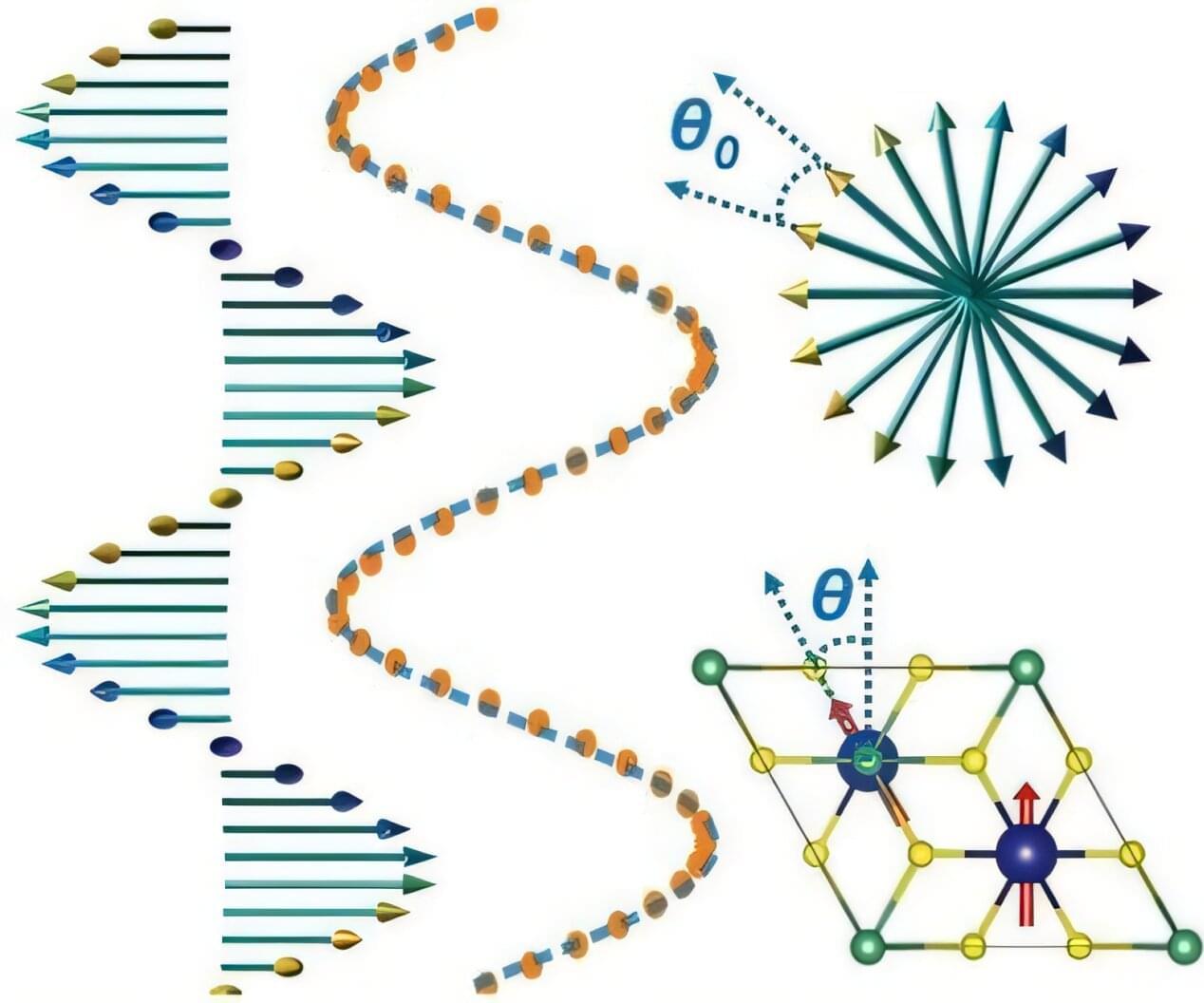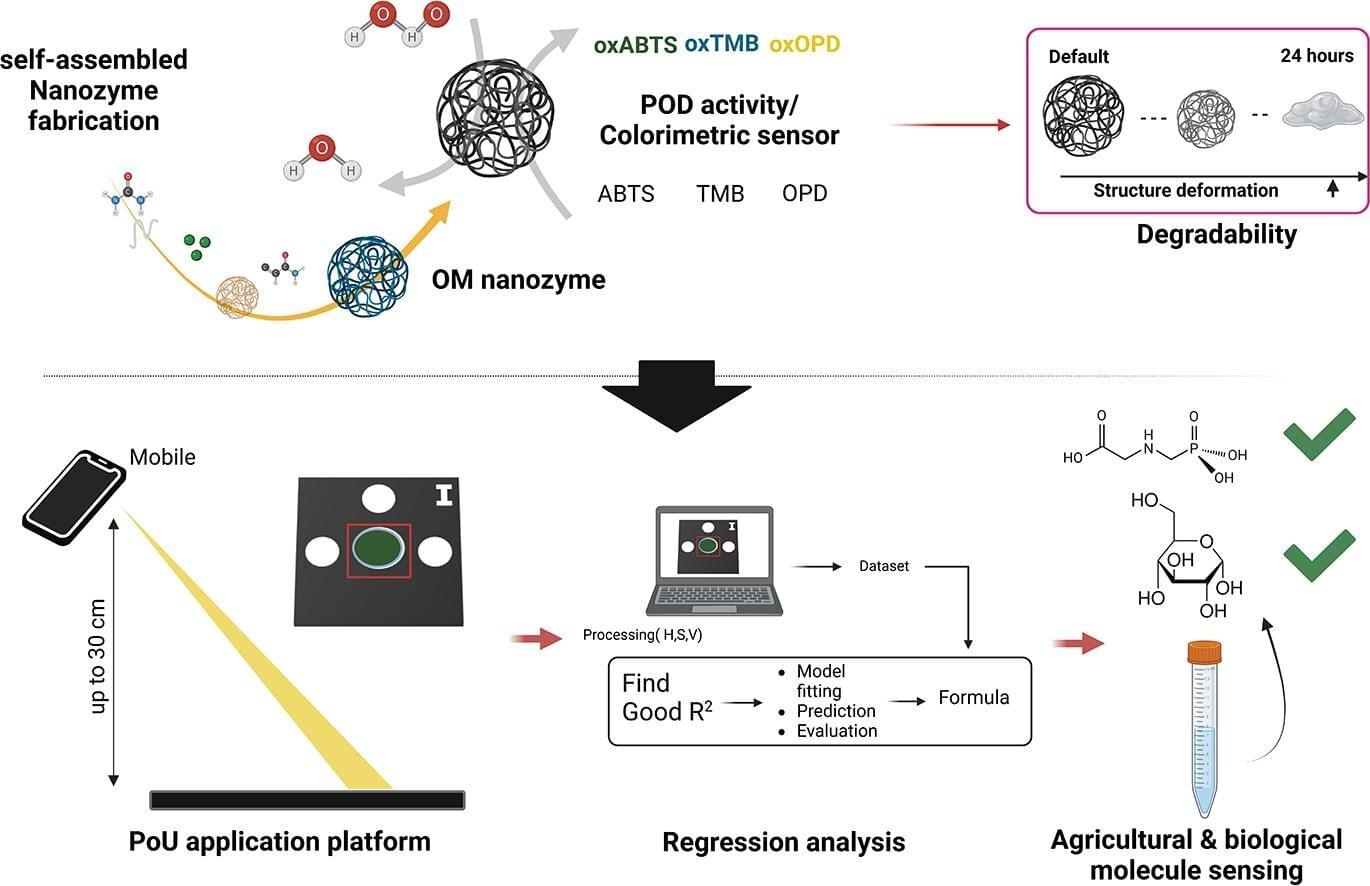Density functional theory (DFT) is a cornerstone tool of modern physics, chemistry, and engineering used to explore the behavior of electrons. While essential in modeling systems with many electrons, it suffers from a well-known flaw called self-interaction error. A recent study has identified a new area where a correction for this error breaks down.
Category: engineering – Page 10
3D integrated circuits promise smaller, faster devices with lower power consumption. Vertically stacked 3D integrated circuits also enable novel in-memory and in-sensor computing paradigms and incorporate functionally diverse materials, which can benefit many edge applications. There are several complementary approaches to 3D integration. For example, 3D heterogeneous integration involves stacking and interconnecting multiple chips, each potentially made from different materials or optimized for different functions, within a single package. On the other hand, 3D monolithic integration refers to fabricating layers of transistors sequentially on a single wafer, creating a more seamless and compact structure. This approach offers even greater density and performance benefits by reducing interlayer distances and improving signal integrity. Both techniques are crucial for advancing the next generation of high-performance, energy-efficient electronic devices and require interdisciplinary collaborations across materials science, electrical engineering, and semiconductor manufacturing.
In this Communications Engineering collection, we aim to drive research in the engineering side of 3D integration by bringing together the following topics of interest:
A phone screen you can’t scratch no matter how many times you drop it; glasses that prevent glare; a windshield that doesn’t get dusty. These are all possibilities thanks to a new way to produce sapphire.
Researchers at The University of Texas at Austin have discovered techniques to bestow superpowers upon sapphire, a material that most of us think of as just a pretty jewel. But sapphire is seen as a critical material across many different areas, from defense to consumer electronics to next-generation windows, because it’s nearly impossible to scratch.
“Sapphire is such a high-value material because of its hardness and many other favorable properties,” said Chih-Hao Chang, associate professor in the Walker Department of Mechanical Engineering and leader of the new research. “But the same properties that make it attractive also make it difficult to manufacture at small scales.”
In a trailblazing advancement in cancer therapy, researchers at Korea Advanced Institute of Science and Technology (KAIST) have developed a technology that transforms colon cancer cells into normal-like cells without destroying them.
This innovative approach, led by Professor Kwang-Hyun Cho of the Department of Bio and Brain Engineering, represents a significant departure from traditional cancer treatments that rely on killing cancer cells, often leading to severe side effects and risks of recurrence.
In human engineering, we design systems to be predictable and controlled. By contrast, nature thrives on systems where simple rules generate rich, emergent complexity. The computational nature of the universe explains how simplicity can generate the complexity we see in natural phenomena. Imagine being able to understand everything about the universe and solve all its mysteries by a computational approach that uses very simple rules. Instead of being limited to mathematical equations, using very basic computational rules, we might be able to figure out and describe everything in the universe, like what happened at the very beginning? What is energy? What’s the nature of dark matter? Is traveling faster than light possible? What is consciousness? Is there free will? How can we unify different theories of physics into one ultimate theory of everything?
This paradigm goes against the traditional notion that complexity in nature must arise from complicated origins. It claims that simplicity in fundamental rules can produce astonishing complexity in behavior. Entering the Wolfram’s physics project: The computational universe!
Thousands of hours have been dedicated to the creation of this video. Producing another episode of this caliber would be difficult without your help. If you would like to see more, please consider supporting me on / disculogic, or via PayPal for a one-time donation at https://paypal.me/Disculogic.
Chapters:
00:00 Intro.
01:48 Fundamentally computational.
08:51 Computational irreducibility.
13:14 Causal invariance.
16:16 Universal computation.
18:44 Spatial dimensions.
21:36 Space curvature.
23:52 Time and causality.
27:12 Energy.
29:38 Quantum mechanics.
31:31 Faster than light travel.
34:56 Dark matter.
36:30 Critiques.
39:15 Meta-framework.
41:19 The ultimate rule.
44:21 Consciousness.
46:00 Free will.
48:02 Meaning and purpose.
49:09 Unification.
55:14 Further analysis.
01:02:30 Credits.
#science #universe #documentary
Deep within certain magnetic molecules, atoms arrange their spins in a spiral pattern, forming structures called chiral helimagnets. These helical spin patterns have intrigued researchers for years due to their potential for powering next-generation electronics. But decoding their properties has remained a mystery—until now.
Researchers at the University of California San Diego have developed a new computational approach to accurately model and predict these complex spin structures using quantum mechanics calculations. Their work was published on Feb. 19 in Advanced Functional Materials.
“The helical spin structures in two-dimensional layered materials have been experimentally observed for over 40 years. It has been a longstanding challenge to predict them with precision,” said Kesong Yang, professor in the Aiiso Yufeng Li Family Department of Chemical and Nano Engineering at the UC San Diego Jacobs School of Engineering and senior author of the study. “The helical period in the layered compound extends up to 48 nanometers, making it extremely difficult to accurately calculate all the electron and spin interactions at this scale.”
A new generation of therapeutics looks beyond simply reengineering the gut microbiome to exploiting multiple pathways for novel microbiome and microbial applications.
Apertura Gene Therapy Supports the Broad Institute in Development of Gene Therapy for Prion Disease Using Engineered AAV Capsid Targeting TfR1 for CNS Delivery
Posted in biotech/medical, engineering, genetics, neuroscience | Leave a Comment on Apertura Gene Therapy Supports the Broad Institute in Development of Gene Therapy for Prion Disease Using Engineered AAV Capsid Targeting TfR1 for CNS Delivery
Two remarkable innovations coming together to tackle prion disease: AAVs that leverage human receptors to cross the blood-brain-barrier + a way of epigenetically silencing the gene encoding prions. I recall reading those cited papers and both are amazing!
BOSTON and NEW YORK, Feb. 28, 2025 /PRNewswire/ — Apertura Gene Therapy, a biotechnology company focused on innovative gene therapy solutions, supports the Broad Institute of MIT and Harvard, and the Whitehead Institute in advancing a gene therapy approach for the treatment of prion disease. The project is led by the Vallabh-Minikel lab at the Broad Institute which is focused on finding a cure for prion disease, and their approach leverages two cutting-edge technologies developed at the Institutes of both the Broad and Whitehead: the CHARM platform designed in Dr. Jonathan Weismann’s lab, and TfR1 capsid, an engineered AAV designed in the lab of Dr. Ben Deverman, Director of Vector Engineering at the Broad Institute and scientific founder of Apertura.
Prion disease is a rare, fatal, neurodegenerative disorder caused by misfolded proteins. The new gene therapy aims to address the root cause by using CHARM (Coupled Histone tail for Autoinhibition Release of Methyltransferase) to target and silence the gene that codes for the disease-causing protein1. This payload will be combined with Apertura’s TfR1 capsid, an adeno-associated virus (AAV) capsid engineered to efficiently cross the blood-brain barrier by binding to the human TfR1 receptor, which facilitates iron transport into brain cells2. Together, these technologies represent a transformative approach to tackling CNS diseases.
“We are thrilled to see the progress being made in the development of this innovative therapy for prion disease,” said Dr. Sonia Vallabh, co-leader of the group at the Broad working on preventative therapies for prion disease. “The collaborative efforts between Apertura, the Broad Institute and the Whitehead mark a significant milestone toward addressing unmet needs in neurodegenerative disorders.”
Nanozymes are synthetic materials that have enzyme-like catalytic properties, and they are broadly used for biomedical purposes, such as disease diagnostics. However, inorganic nanozymes are generally toxic, expensive, and complicated to produce, making them unsuitable for the agricultural and food industries.
A University of Illinois Urbana-Champaign research team has developed organic-material-based nanozymes that are non-toxic, environmentally friendly, and cost-effective. In two new studies, they introduce next-generation organic nanozymes and explore a point-of-use platform for molecule detection in agricultural products.
“The first generation of organic-compound-based (OC) nanozymes had some minor drawbacks, so our research group worked to make improvements. The previous OC nanozymes required the use of particle stabilizing polymers having repeatable functional groups, which assured stability of the nanozyme’s nanoscale framework, but didn’t achieve a sufficiently small particle size,” said lead author Dong Hoon Lee, who completed his Ph.D. from the Department of Agricultural and Biological Engineering (ABE), part of the College of Agricultural, Consumer and Environmental Sciences and The Grainger College of Engineering at the U. of I.
Gravity shapes our universe, but could we one day shape gravity? Join us as we explore the possibilities of gravity technology, from artificial gravity and interstellar travel to terraforming and cosmic engineering.
Watch my exclusive video Big Alien Theory https://nebula.tv/videos/isaacarthur–… Nebula using my link for 40% off an annual subscription: https://go.nebula.tv/isaacarthur Get a Lifetime Membership to Nebula for only $300: https://go.nebula.tv/lifetime?ref=isa… Use the link gift.nebula.tv/isaacarthur to give a year of Nebula to a friend for just $30. Visit our Website: http://www.isaacarthur.net Join Nebula: https://go.nebula.tv/isaacarthur Support us on Patreon: / isaacarthur Support us on Subscribestar: https://www.subscribestar.com/isaac-a… Facebook Group:
/ 1,583,992,725,237,264 Reddit:
/ isaacarthur Twitter:
/ isaac_a_arthur on Twitter and RT our future content. SFIA Discord Server:
/ discord Credits: Black Sun Rising: Living On A Planet Around A Black Hole Credits: Gravity Tech Episode 488; February 27, 2025 Written, Produced & Narrated by: Isaac Arthur Editor: Donagh Broderick Graphics: Jeremy Jozwik, LegionTech Studios, Sergio Botero Select imagery/video supplied by Getty Images Music Courtesy of Epidemic Sound http://epidemicsound.com/creator Phase Shift, “Forest Night” Chris Zabriskie, “Unfoldment, Revealment”, “A New Day in a New Sector”, Stellardrone, “Red Giant”, “Billions and Billions“
Get Nebula using my link for 40% off an annual subscription: https://go.nebula.tv/isaacarthur.
Get a Lifetime Membership to Nebula for only $300: https://go.nebula.tv/lifetime?ref=isa…
Use the link gift.nebula.tv/isaacarthur to give a year of Nebula to a friend for just $30.
Visit our Website: http://www.isaacarthur.net.
Join Nebula: https://go.nebula.tv/isaacarthur.
Support us on Patreon: / isaacarthur.
Support us on Subscribestar: https://www.subscribestar.com/isaac-a…
Facebook Group: / 1583992725237264
Reddit: / isaacarthur.
Twitter: / isaac_a_arthur on Twitter and RT our future content.
SFIA Discord Server: / discord.
Credits:
Black Sun Rising: Living On A Planet Around A Black Hole.
Credits:
Gravity Tech.
Episode 488; February 27, 2025
Written, Produced & Narrated by: Isaac Arthur.
Editor: Donagh Broderick.
Graphics: Jeremy Jozwik, LegionTech Studios, Sergio Botero.
Select imagery/video supplied by Getty Images.
Music Courtesy of Epidemic Sound http://epidemicsound.com/creator.
Phase Shift, \









